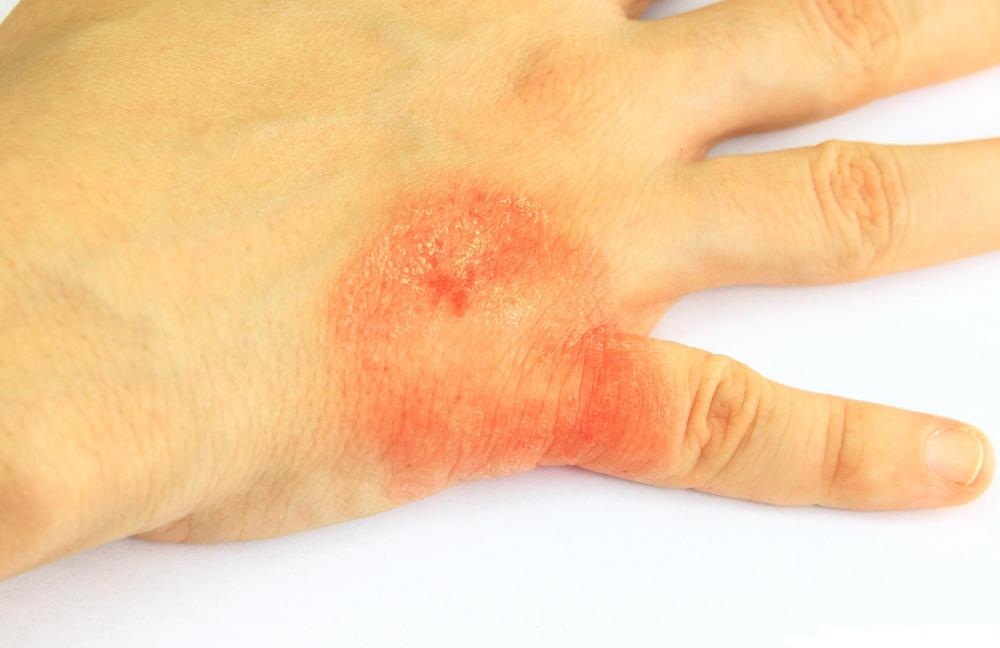What is a skin allergy?
Skin allergy is the skin’s reaction to an allergen, irritant, or foreign particle. Then reaction happens when the skin comes in contact with a foreign particle that it is not used to. When an unknown particle touches your skin, your body thinks it is under attack. Hence, the immune system is triggered. After the immune system has been triggered, it overreacts and sends antibodies to fight off the foreign particle. Thus, the overreaction from the immune system ultimately leads to scaly, itchy skin, bumps, redness, blisters, welts, and rashes.
Furthermore, it can cover the entire body or a few areas of the body. So, when the body triggers the immune system due to contact with an allergen we call it an allergic skin condition. Skin allergy can easily be caused by the dust residing on your bookshelf to the smoke of a cigarette. However, skin allergies should not be taken lightly and must be consulted by an expert dermatologist.
Types of Skin allergy:
Here, we will discuss the common types of skin allergy or allergic reactions seen among most people.
- Atopic Dermatitis (Eczema): Eczema is a common skin condition. It is usually seen most among children. Eczema causes the skin to become leaky. Hence, the skin becomes dry and prone to irritation. A common symptom of eczema is dry, red, irritated, and itchy skin. The itchiness of the irritation is not caused by histamines. Therefore, antihistamines do not work as their remedy.
- Hives: Hives is the phenomenon of skin inflammation due to releasing of histamines. Histamine causes small blood vessels to leak. The leak causes the skin to get inflamed. Moreover, due to hives angioedema may occur. In angioedema, the deep layers of the skin get swollen. According to the type of trigger, hives are classified into two types. When food or any trigger causes hives, we call it acute trigger. When there is no particular trigger causing hives it is called chronic hives.
- Angioedema: As explained above angioedema is in relation to hives. It causes the deep layers of the skin to swell up. It affects the soft tissues such as eyelids, mouth, or genitals. Acute angioedema lasts only for a short time of minutes to hours. Allergic reaction to medication or food causes acute angioedema.
- Contact dermatitis: Contact dermatitis happens when the skin reacts to any allergen upon contact. Common symptoms of it are rash, blisters, itching, and burning. Sometimes an allergen won’t cause a skin reaction unless the skin is also exposed to sunlight. This condition is called photoallergic contact dermatitis. It can occur with products such as shaving lotion, sunscreen, and some perfumes.
Common causes
Usually, it takes the skin 10 days to react to any new or foreign particle that comes in contact with the skin. Sometimes, it may take even years to develop an allergic reaction to it. A few common causes of skin allergy has been listed below:
- Nickel, a metal used in jewelry and snaps on jeans, makeup, lotions, soaps, and shampoos. If you’re allergic to nickel in something you eat, you’ll get bumps on the sides of your fingers, called dyshidrotic hand eczema or pompholyx.
- Sunscreens and bug sprays
- Medications you put on your skin, like antibiotics or anti-itch creams
- Fragrances
- Cleaning products
- Plants, including poison ivy. Poison ivy releases an oil called urushiol. This il causes skin rash, bumps, and blisters.
- Latex, which is used in stretchy things like plastic gloves, elastic in clothing, condoms, and balloons
- Chemicals
Symptoms of skin allergy:
Allergic symptoms can show up in any part of the body. There are a few common symptoms that are generic to all types of reactions. However, the commonality of the symptoms should not be confused with its severity. In any case of skin irritation, redness due to contact with something may result in an allergic reaction. It is however depending on the person’s body the severity of the reaction can be determined. A few common symptoms are:
- sneezing and an itchy, runny or blocked nose
- itchy, red, watering eyes (conjunctivitis)
- wheezing, chest tightness, shortness of breath, and a cough
- a raised, itchy, red rash
- swollen lips, tongue, eyes, or face
- tummy pain, feeling sick, vomiting or diarrhea
- dry, red, and cracked skin
Expert dermatologists can aptly determine the causes of skin allergy and its severity. In cases of skin allergies, it is always best to avoid factors that trigger your reactions.



